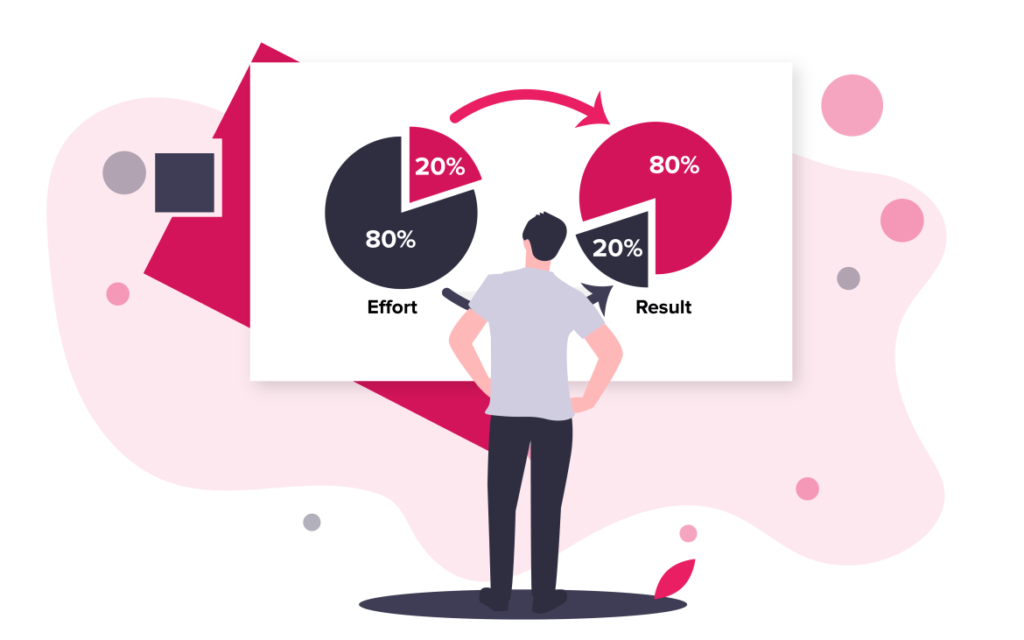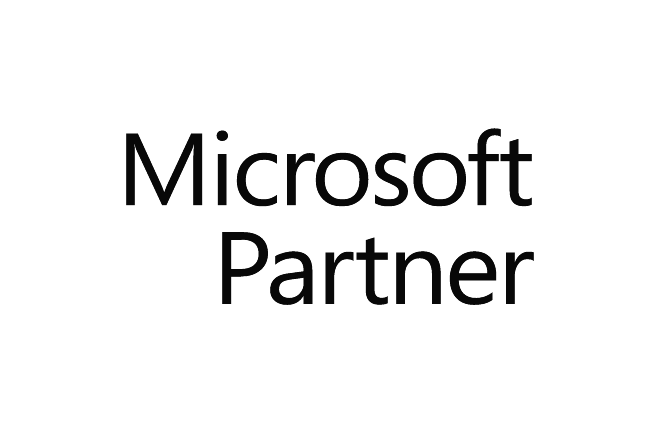If you knew that most of your results came from just a small fraction of your work, would you prioritize your tasks equally? Probably not. Some efforts produce incredibly high value, while others give little results – not all efforts are equal. The 80/20-rule underlines that our use of resources is less than optimal. But the goods news is that there is much room for improvement!
What is the 80/20-rule?
“For many events, roughly 80% of the effects come from 20% of the causes.” – Vilfredo Pareto
The Italian economist Vilfredo Pareto discovered a pattern in 1897 when researching wealth distribution in Italy: approximately 80 % of income and wealth went to around 20 % of people. In itself, this observation was not that surprising. However, Pareto discovered a consistent mathematical relationship between the proportion of people and their amount of wealth. In other words, the distribution of wealth across the population was predictably unbalanced. He also found the same pattern of imbalance repeating itself with different countries and different time-periods.

Joseph M.Juran, a quality management pioneer, suggested the principle and named it “the Pareto Principle” after Vilfredo Pareto. Juran coined the term “the Vital Few and the Trivial Many” to explain the 80/20 relationship. This principle has since gotten different names, including “the 80/20-rule,” “the rule of the Vital Few,” “the Principle of Least Effort,” and “the Principle of Imbalance”. In this blog post, we will call it the 80/20-rule.
80/20 is not an exact measurement, but a metaphor for this pattern. Sometimes, 90 % of profits come from 1 % of products, or 70 % of customers account for 30 % of revenue. The point is that there is an imbalance – it’s not 50/50.
How can you utilize the 80/20-rule in business and life?
“Things that matter most must never be at the mercy of things that matter least.” – Johann Wolfgang von Goethe
The 80/20 rule asserts that 20 % of inputs are responsible for about 80 % of output, and it applies to most aspects of business and life. There are only a few things that generate important results. By understanding and utilizing the 80/20-rule, you can raise both personal and organizational effectiveness and increase profitability.
1. Identify the “Vital Few”
Start by determining what drives your growth, profitability or results. Which 20 % of inputs generates 80 % of the outputs? These 20 % are “the Vital Few”.
One way to identify these 20 % is to use quantitative analysis to determine the exact relationship between specific inputs and outputs. In the example below, I have created a Pareto chart showing profits by customers.
You can also assume that a 80/20-relationship exists and use your intuition to identify which inputs are most likely to to produce 80 % of the results.
Here are some examples on areas you can examine:
- Strategy: Which products, customers or market segments are generating the most profits?
- Quality control: Which defects causes most of the quality problems?
- Software development: Which features account for 80 % of the overall use?
- Task management: Which tasks account for most of your results?
- Project management: Which project activities generates most of the overall benefits?
- Personal time management: Which activities produce the most overall value in terms of reaching your personal goals?
2. Focus on “the Vital Few”
When you have determined which 20 % generates the most results, it’s time to double down on these.
Customers
- Prioritize the 20 % of customers that generate the most profits.
- Devote more time and effort keeping the vital few happy and up-selling, instead of spending equal effort on all customers.
Products
- Raise sales effort for the 20 % of products that generates most profits.
- For the 80 % of products that generates only 20 % of profits, you should consider if you need to raise prices, cut costs or eliminate them from your product line.
Quality control
- Focus on eliminating the 20 % of defects that cause 80 % of the quality problems.
- By concentrating on fixing 20 % of the defects, you’re making a significant improvement by removing 80 % of the problems.
Software development
- Put more effort into making the 20 % of features that accounts for 80 % of the overall use as simple and accessible as possible.
- Remember that even though 80 % of the features are used less often, it can still be key functionality to some of your high-value users.
Project management
- Simplify the project by focusing on the 20 % of projects activities that will generate 80 % of the overall value.
- 80 % of problems arise in the design phase, so try to allocate more time to detailed planning rather than execution.
Personal time management
Concentrate your time and effort on high-value activities. According to Richard Koch (1999), the top ten high-value uses of time are:
- Things that advance your overall purpose in life.
- Things you have always wanted to do.
- Things already in the 20/80 relationship of time to results.
- Innovative ways of doing things that promise to slash the time required and/or multiply the quality of results.
- Things other people tell you can’t be done.
- Things other people have done successfully in a different arena.
- Things that use your own creativity.
- Things that you can get other people to do for you with relatively little effort on your part.
- Anything with high-quality collaborators who have already transcended the 80/20 rule of time, who use time eccentrically and effectively.
- Things for which it is now or never.
3. Do something about the underperforming 80 %
The 80/20-rule states that 80 % of your inputs accounts for 20 % of your results, which means that 80 % of your resources could be better spent elsewhere. These 80 % are “the Trivial Many”.
Let’s say it takes 20 % effort to get a task to 80 %. Is it worth spending 80 % effort to get it to 100 %? Is putting in more work efficient? The answer will often be no.
So, how do you increase the productivity for “the Trivial Many”?
- Free up resources by eliminating or outsourcing low-value tasks and activities.
- Move these resources from low-value to high-value uses.
Key takeaways
- The 80/20-rule asserts that 20 % of effort generates 80 % of the results.
- Understanding and utilizing this rule helps you prioritize your efforts, increasing both your personal and organizational productivity.
- Identify and concentrate on the 20 % of inputs that creates the most overall value.
- Find ways to increase productivity for the 80 % of inputs that has the lowest impact.
Further reading
Koch, R. (1998). “The 80/20 Principle: The Secret to Achieving More With Less”. London, UK: Nicholas Brealy Publishing.






